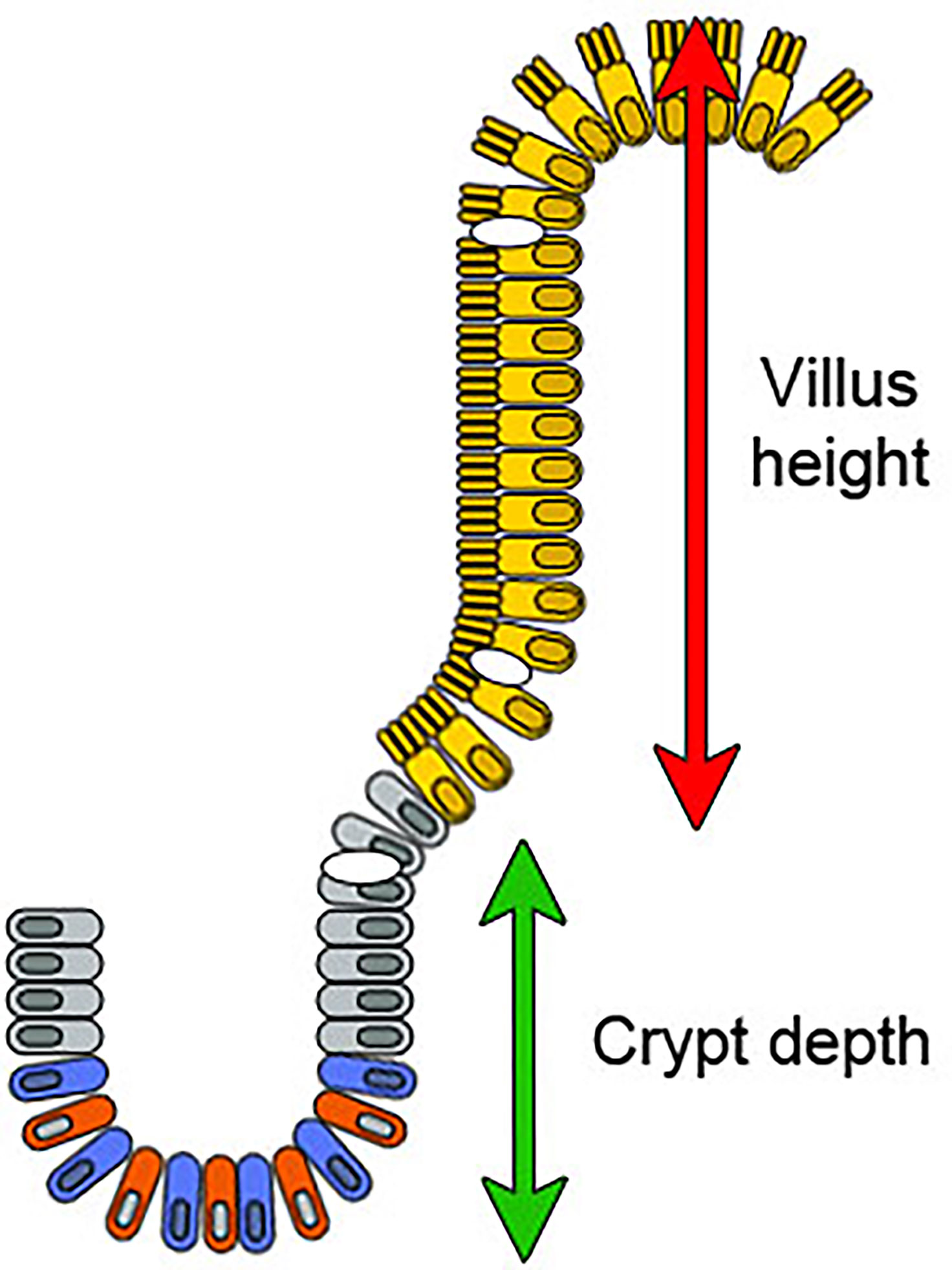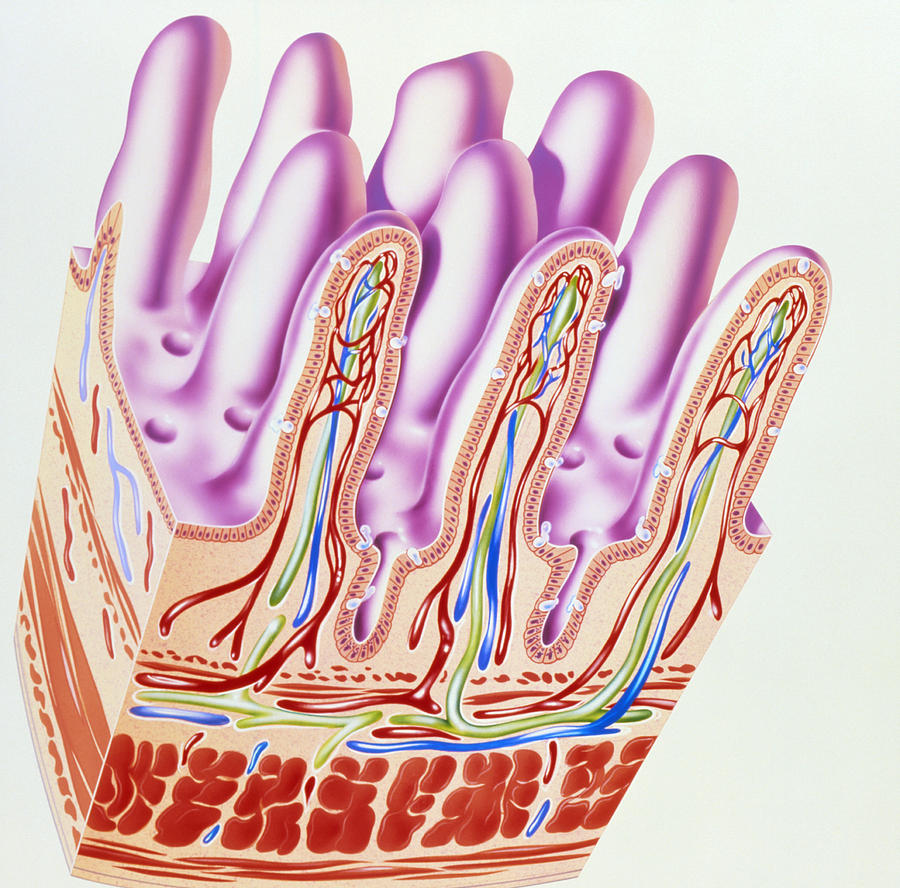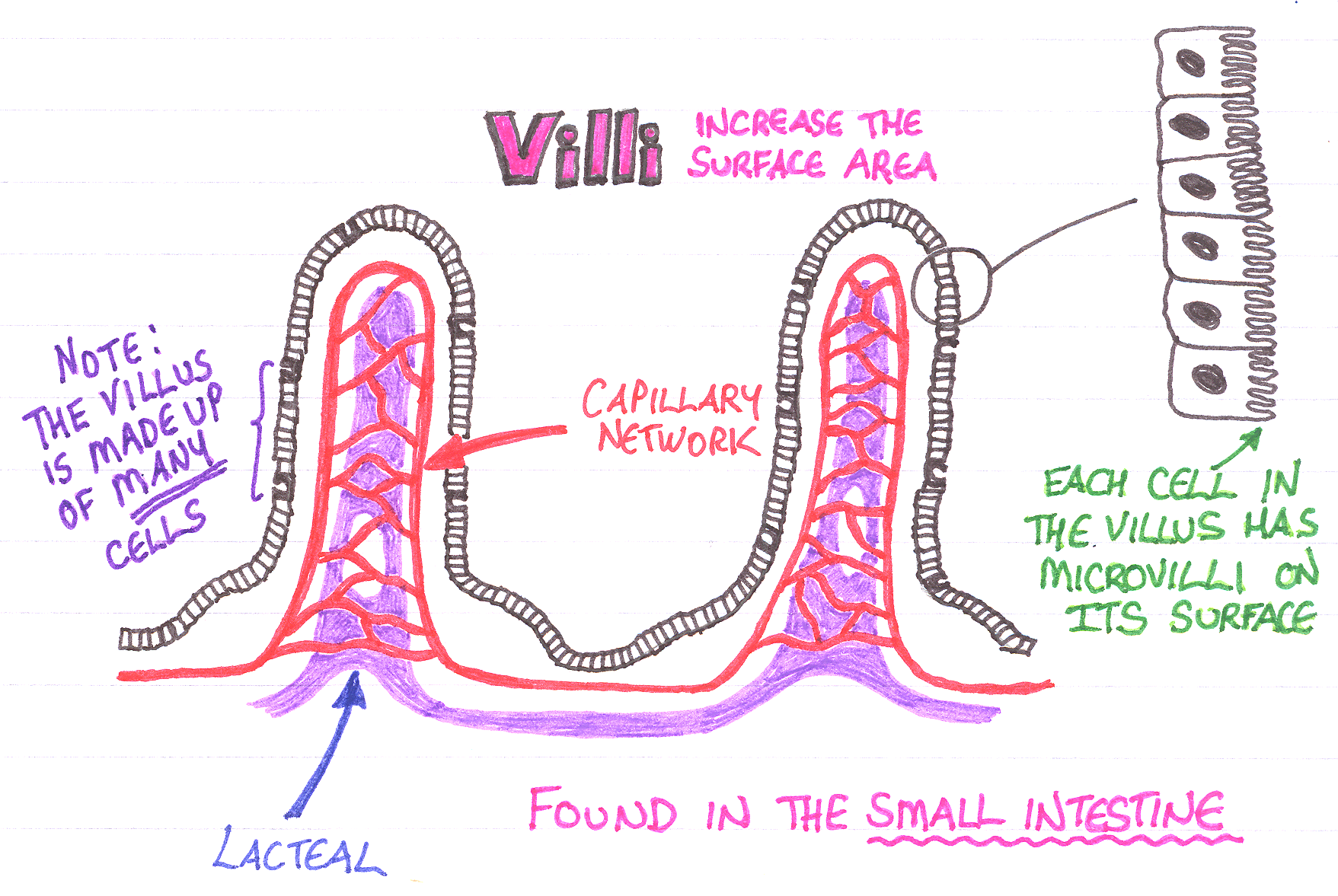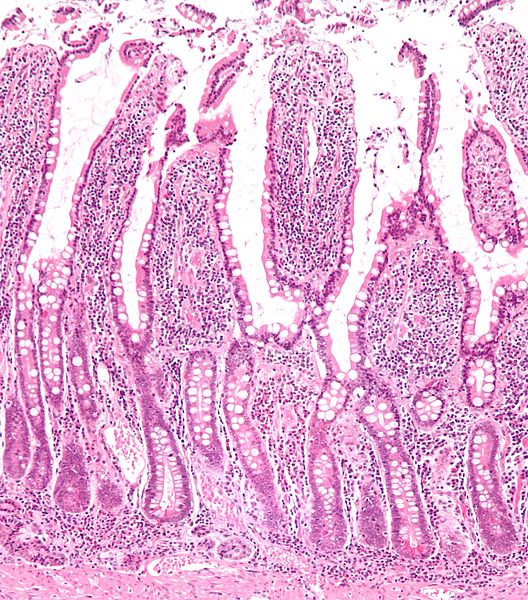
LM of a section through intestinal villi & crypts Stock Image P520/0082 Science Photo Library
Crypts (of Lieberkuhn) are moat-like invaginations of the epithelium around the villi, and are lined largely with younger epithelial cells which are involved primarily in secretion. Importantly, toward the base of the crypts are stem cells, which continually divide and provide the source of all the epithelial cells in the crypts and on the villi.

Frontiers Apolipoprotein A4 Defines the VillusCrypt Border in Duodenal Specimens for Celiac
The initial crypt formation process occurs by a symmetry-breaking event; the crypt-villus separation process is also recapitulated in a 3D organoid culture system. When a crypt-like protrusion is generated from a round-shaped organoid, specialized wedge-shaped cells referred to as hinge cells appear at the crypt/villus boundaries ( Sumigray et.

Artwork Showing Structure Of Small Intestine Villi Photograph by John Bavosi
Crypts only begin to emerge in the small intestine after villus morphogenesis is complete. Epithelial cells located in the inter-villus regions undergo myosin-II-driven apical constriction, which.
:max_bytes(150000):strip_icc()/GettyImages-103018448-01b8ff85b5a243588652ac05c6bff972.jpg)
How the Intestinal Villi Help With Digestion
Junping Wang, Baojie Li & Huijuan Liu BMC Biology 21, Article number: 169 ( 2023 ) Cite this article 1255 Accesses Metrics Abstract Background The nutrient-absorbing villi of small intestines are renewed and repaired by intestinal stem cells (ISCs), which reside in a well-organized crypt structure.

Why do we have villi in the small intestine? Socratic
Several in vitro models have been developed to study the intestinal epithelium. (a) Organoids are 3D organotypic cultures obtained from dissociated intestinal crypts, in which cells self-organize, with an enrichment of stem cells in crypt-like domains and of differentiated cells in villi-like regions along the central lumen. (b) 2D self.

Pictures A&B Gastrointestinal villus showing the crypt, enterocyte, and microvilli Wenger Feeds
The adult mammalian intestine is composed of two connected structures, the absorptive villi and the crypts, which house progenitor cells. Mouse crypts develop postnatally and are the architectural unit of the stem cell niche, yet the pathways that drive their formation are not known.

Diagram Of Villi In Small Intestine diagramwirings
In the intestinal epithelium, proliferated epithelial cells ascend the crypts and villi and shed at the villus tips into the gut lumen. In this study, we theoretically investigate the roles of the villi on cell turnover. We present a stochastic model that focuses on the duration over which cells mig.

Determination of the villi/crypt ratio. The villi/crypt ratio (V/C... Download Scientific Diagram
Intestinal crypts and villi develop in human fetuses from 8-24 weeks gestation with an increase in crypt depth and villus height with advancing gestational age 1.

Histological aspects of the duodenal villi and crypts for the control... Download Scientific
In histology, an intestinal gland (also crypt of Lieberkühn and intestinal crypt) is a gland found in between villi in the intestinal epithelium lining of the small intestine and large intestine (or colon).
5 Schematic of duodenal villi and crypts. Download Scientific Diagram
Intestinal crypts, which are composed of stem cells (SCs) and Paneth cells, are an essential unit for epithelial homeostasis 1. In both mice and humans, crypts form after the emergence of.

Does the crypts of lieberkuhn also consists of microvilli which is present in the villi as the
Evolution integrated the conflicting needs for maximized absorption and barrier function by creating crypts and villi (see Figure 1A ). Villi are capillary-rich protrusions into the intestinal lumen of 1.6 mm (proximal) to 0.5 mm (distal) length.

What is the Difference Between Villi and Microvilli
The mesenchymally-derived basement membrane dynamically controls morphogenesis, cell differentiation and polarity, while also providing the structural basis for villi, crypts and the microvasculature of the lamina propria so that tissue morphology, crucially, is preserved in the absence of epithelium.

Intestinal crypt. Small bowel epithelium is organized into villus and... Download Scientific
The surface of the small intestine is lined by a monolayer of tightly packed, polarized epithelial cells organized into invaginations called crypts, and finger-like protrusions called villi 1,.

Intestinal structure (A) diagram of small intestine showing crypts,... Download Scientific
The inner lining of the gut consists of a single cell layer of intestinal epithelium that forms millions of crypts and villi. Stem cells (shown in green) reside at the bottom of the crypts and replicate daily, generating new cells to maintain the tissue. Image courtesy of Unmesh Jadhav/HMS, DFCI

A representation of (a) healthy and (b) damaged villi (Adapted from... Download Scientific
Crypts and villi: a self-organizing system? Through hedgehog and BMP, each crypt or intervillus pocket delivers a long-range signal that inhibits crypt formation in its neighbourhood. But what.

5. While both the small and large intestine have crypts, the large... Download Scientific Diagram
This layer is organised into finger-like protrusions (villi), which serve as the site of nutrient absorption and pockets (crypts) containing mostly proliferating cells. This outer layer of.